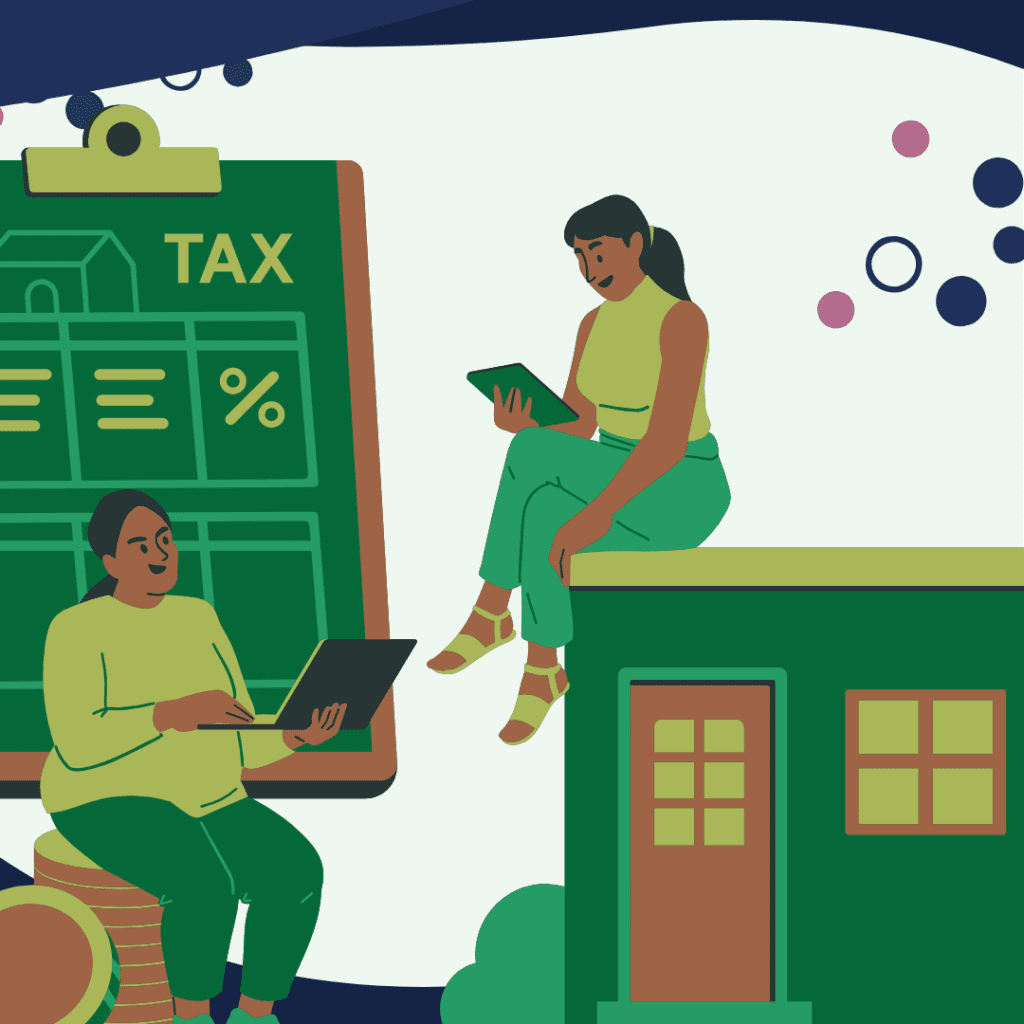A repayment and tax filing guide for married borrowers with student loans.

The student loan portfolio in the United States is staggering. Over 43 million borrowers have about $1.6 trillion is federal debt; if you include private student loans, the total is over $1.7 trillion and the average balance is $41,000 (though individual balances can be much higher than that!). Student debt may stay with you for a long time and can delay or prevent the achievement of other big life goals like buying a home or starting a family.
While managing this debt is often a challenge, federal student loans come with a lot of options for borrowers, but the system is sometimes mind-bogglingly difficult to navigate.
In this blog, we’re going to focus on what married borrowers need to know to make sure they are getting the most this complicated system has to offer!
Let’s Start with the Basics
There are two ways to make payments on federal student loans:
1. Traditional Repayment Plans-payments are based on the debt balance, interest rate and a pre-set payback period. These plans are best suited for borrowers whose income is high relative to their debt balance and who can afford to make aggressive payments and pay the loans off in 10 years or less.
2. Income-Driven Repayment (IDR) Plans-payments are generally based on your Adjusted Gross Income (AGI), your family size and your tax filing status. All these plans offer forgiveness if you make payments for 10-25 years (depending on the plan, the type of loan and the original balance). IDR plans may offer an alternative for those who cannot afford payments in a Traditional Plan. To pursue forgiveness programs such as Public Service Loan Forgiveness (PSLF) or IDR Forgiveness (IDRF), you must be in one of the four IDR plans (SAVE, IBR, PAYE[1]or ICR[2]). All IDR plans must be recertified annually. Payments will fluctuate based on your income. IDR applications can be filed on the studenaid.gov IDR Request page.
When applying for an IDR plan, payments are generally based on the AGI from your last filed tax-return. If you did not file a tax-return within the past two tax-years, the payment will be based on your current income.
Determining Tax-Filing Status
One of the most important decisions that will affect student loan payments for married borrowers is which tax-filing status to choose. Following the introduction of the new SAVE plan in the summer of 2023, all IDR plans now calculate payments for married borrowers the same way.
If you file your taxes jointly, payments will be based on your combined income. If you file taxes married but separately, payments will be based on your income alone.
Take the example of Helen and Michael who are married with no children:
- Helen has $60,000 in federal student loans and earns $50,000.
- Michael has no student debt and earns $60,000.
- Their combined income is $110,000.
Helen is applying for the SAVE plan. If they filed their taxes jointly, her monthly payment would be $547. If they filed taxes separately, her monthly payment would be $143. Helen will save about $400 a month in student loan payments (over $4,800 per year) if she files her taxes separately.
To make a fully informed decision about your tax-filing status, you must also consider the impact on the amount of tax you will pay as a couple. Generally speaking, married couples will pay less taxes if they file jointly versus filing separately. But each situation is different!
Use the Federal Student Aid (FSA) Loan Simulator on the studentaid.gov website to estimate your student loan payments and consult an accountant to determine the tax impact of the different filing statuses. Compare the two before you make your choice.
For instance, in the case of Helen and Michael above, their accountant says they will pay $3,000[3] less as a couple if they file their taxes jointly. But the savings in student loan payments is greater so they opt to file taxes separately.
| Tax Filing Status | Annual Student Loan Payment | Additional Taxes | Annual Total * |
|---|---|---|---|
| Married Filing Separately | $1,716 | $3,000 | $4,716 |
| Married Filing Jointly | $6,564 | – | $6,564 |
| Variance (Jointly v. Separate) | ($4,848) | $3,000 | $1,848 |
The Married Couple Payment Adjustment in IDR Plans
A less well-known option for married borrowers who both have federal student loans and file taxes jointly, is the ability to have payments adjusted. In this scenario, a single payment is calculated based on the combined income of the couple and payments are adjusted based on each spouse’s share of the total debt. Let’s revisit Helen and Michael (married with no children):
- Helen has $60,000 in federal debt and earns $50,000.
- Michael has $90,000 in federal debt and earns $60,000.
- Their combined debt is $150,000. Their combined income is $110,000. Per their accountant, they will pay $3,000 more in taxes if they file separately; same as in the first example.
| Filing Jointly | Filing Separately |
|---|---|
| In the SAVE plan, if they file jointly, the combined payment would be $547. Helen’s payment will be $219 or 40% of $547 because she has 40% of the total debt ($60,000/$150,000). Michael would be responsible for 60% of the combined payment or $328. | If they file separately, the combined payment will be $370. It will cost them about $2,100 more annually to file their taxes jointly |
In this example, the tax savings from filing jointly ($3,000) exceed the savings they’d get on their student loan payments from filing separately (about $2,100). Therefore, they choose to file jointly.
| Tax Filing Status | Annual Student Loan Payment | Additional Taxes | Annual Total * |
|---|---|---|---|
| Married Filing Jointly | $6,564 | – | $6,564 |
| Married Filing Separately | $4,440 | $3,000 | $7,440 |
| Variance (Jointly v. Separate) | $2,124 | ($3,000) | ($876) |
Another feature of this option is that in SAVE, PAYE and IBR, spouses can choose different payment plans and still get the same payment adjustment. Helen may choose the SAVE plan and pay $219 while Michael chooses a different IDR plan or even one of the Traditional Plans. To get the adjustment in the ICR plan, both parties must choose to pay their loans in that plan. This adjustment only applies when filing taxes jointly.
Other Things To Know
- Children may be claimed as dependents for the purpose of calculating student loan payments in an IDR plan. This will lower your monthly payment. You do not need to claim your children as dependents on your taxes, but you are required to attest that you provide more than half support for them.
- Unborn children may be claimed as dependents when applying for IDR plans. If you become pregnant in between IDR recertification dates, you can have the payment recalculated.
- You may be required to submit information about your spouse when applying for an IDR plan (name, date of birth and social security number).
- If you are married but separated or you cannot reasonably access your spouse’s financial information, you can base your payments in an IDR plan on your own income.
- Payments in Traditional Plans are not affected by your income, family size or tax-filing status.
- Forgiveness programs in the federal system are available to married borrowers just as they are to unmarried borrowers. Eligibility is based on the induvial borrower’s loans, debt balance, employment history, etc.
- Federal student loans are dischargeable in death. This means if a married borrower dies, their debt does not become the obligation of the spouse. This is not always the case with private student loans.
Joint Consolidation Loans
From 1992-July 1, 2006, when the program was discontinued, married borrowers had the option of combining their federal student loans into a Joint Consolidation Loan making them each 100% liable for the entire balance. No mechanism was provided for separating these loans until the Joint Consolidation Loan Separation Act was signed into law in October 2022. This law will make it possible for borrowers to separate and create individual Direct Consolidation Loans under their own name but the application for separation is not yet available and will probably not be available until late 2024 or 2025.
In the meantime, borrowers with these loans can enroll in IDR plans, but they must both select the same plan and payments will be based on combined income regardless of tax filing status. Borrowers with FFELP Joint Consolidation Loans only have access to the IBR plan.
The good news is, provisions have been made to allow Joint Consolidation Loan holders to benefit from one-time programs like the PSLF Waiver, which ended on 10/31/22 and the IDR Account Adjustment which ends on 4/30/2024 that are awarding forgiveness credit based on relaxed rules even though the separation application will not be available until after they expire.
There are some steps you can take now to ensure you are ready when the separation application becomes available. For the latest information, visit Federal Student Aid’s Joint Consolidation Loan Separation News & Updates page.
A Word For Parents Plus Loan Borrowers
Parents may take federal loans for their children to pursue an undergraduate education. These are called Parent Plus loans. While Parent Plus borrowers are not always married, this information may be useful to those who are or for those contemplating marriage and funding a child’s college education via federal loans. In the federal system, parents can borrow the difference between the cost of attendance and the amount of federal aid the student receives. This can add up quickly and become overwhelming as you get older and approach retirement.
Parent Plus loans are often granted to one parent. They cannot be assigned to the student or to the spouse. Payments in the different plans are calculated in the same manner as they are for non-Parent Plus loans. If you are married and file jointly, your combined income will be considered for an Income Driven Repayment plan, usually ICR (Income Contingent Repayment). To exclude a spouse’s income, you would need to file separately.
Though there are ways to manage Parent Plus loans, it is important to have a complete understanding of how they work and what the cost is going to be before you sign on the dotted line as repayment options are more limited. For more information on Parent Plus loans visit our website at edcapny.org/parent-plus-loans/.
Private Student Loans
Private loans generally do not offer the same repayment and forgiveness options as federal loans do whether the borrower is married or not. Tax filing status and income will not impact your monthly payments on private student loans but will affect how much tax you pay as a couple.
Students looking to take out private loans for college will usually require a co-signer. That is often one or both parents (married or not). Co-signers are 100% liable for these loans in the event the primary borrower (the student) cannot make payments.
In Conclusion
As a married borrower, you have access to the same benefits in the federal student loan system and face the same challenges as an unmarried borrower. But you do have some additional decisions to make. Choosing the right tax filing status and familiarizing yourself with the rules of the IDR plans will ensure you are on the shortest and most affordable path to eliminating your debt and will pave the way for a bright financial future! If you were recently married and are about to make the decision on how to file your taxes for the first time, take into consideration the impact on your student loan payments first.
Want personalized guidance on tackling your student loans or help with financing higher education without a heavy debt burden? Contact EDCAP! We offer expert student loan counseling, free for all New York State residents. Learn more about our services here.
For more information on IDR plans and married borrowers click here.
For a relevant article on tax filing status, click here.
[1] The PAYE plan will not be offered to borrowers not already enrolled in it as of July 1, 2024. If you are in this plan, you will not be forced out. But if you leave the plan or miss the recertification deadline, you will not be able to reenroll on or after that date.
[2] The ICR plan will be phased out for all borrowers except those with Parent Plus loans who consolidate. Student borrowers may remain in the plan but if they leave or miss the recertification deadline, they will not be able to reenroll as of July 1, 2024.
[3]Tax calculation is not based on an actual accountant’s estimate and may not be accurate. It is strictly to demonstrate the process of selecting a tax-filing status for student loan borrowers.




